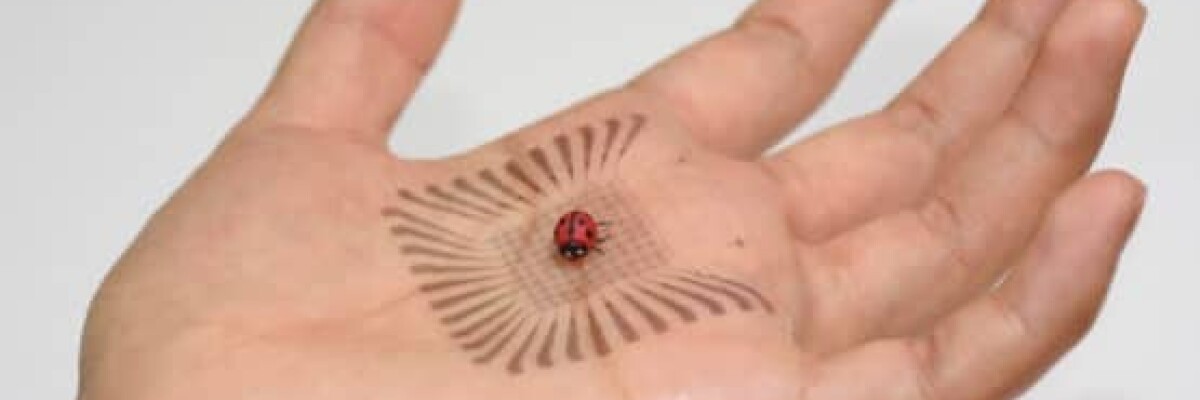Developers of modern sensor systems are creating increasingly sensitive and miniature components. The next step is the creation of flexible electronic circuits which will significantly expand the scope of...
Developers of modern sensor systems are creating increasingly sensitive and miniature components. The next step is the creation of flexible electronic circuits which will significantly expand the scope of development.
Elastic screen for health monitoring
Japanese scientists from the University of Tokyo in collaboration with the printing company Dai Nippon Printing (DNP) have developed an elastic screen about 1mm thick that can be worn directly on the skin. The breathable material does not cause irritation with prolonged use. A set of sensors allows you to measure medical indicators such as: temperature, pressure, and pulse. The data is immediately displayed on the screen.
The electronics of the presented prototype is made of gold nanofibers placed on a base of polyvinyl alcohol (PVA). The alcohol base stretches on a wet hand and the fibers adjust to the skin. So far, the screen has a small resolution of 16 x 24. The image is transmitted by micro light emitting diodes (MicroLED). The screen can be stretched by 45% without losing funcionality. The wireless module allows you to use the material with a smartphone.
The main area of application will be self-monitoring of medical indicators.
Electronic skin that recognizes touch
Stanford researchers have gone even further: their stretchable electronics are able to recognize touch.
Scientists have been developing components of an elastic electronic circuit for more than 20 years. The result of the research is described in “Nature”.
Electronic leather consists of several polymer layers. The base layer provides elasticity: the material can be stretched up to two times its original size. The prototype was stretched more than a thousand times during tests without any loss of sensitivity.
Electronic circuits are arranged according to the principle of nerve endings: in 1 square centimeter there are more than 6,000 different sensors. Dielectrics provide electrical insulation of sensor circuits.
In addition to the prototype of the sensory material, the scientists have also proposed a process of mass production. The appearance of an affordable "electronic skin" on the market will create completely new medical implants and interfaces for soft robotics and augmented reality.
Share this with your friends!






Be the first to comment
Please log in to comment